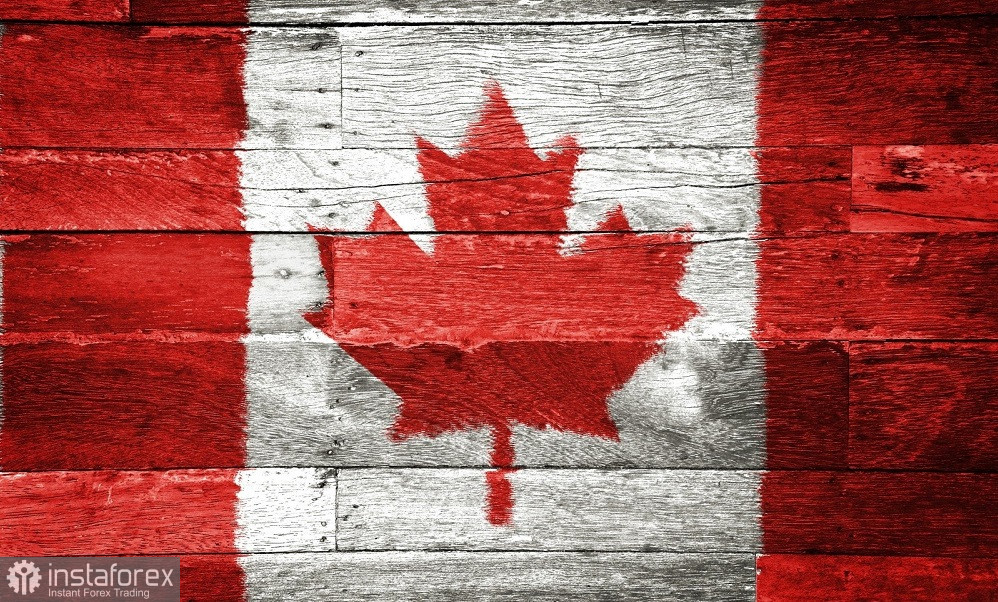The USD/CAD pair has been actively declining over the past few days. The decline was triggered by Tuesday's inflation report from Canada, which showed all components within the "green zone." This allowed USD/CAD sellers to go on the offensive. Over the previous four weeks, the pair had been steadily rising, climbing from 1.3720 to 1.4080 (a six-month high). Following the inflation release, it fell back into the 1.39 zone. Still, bears failed to overcome the 1.3970 support level, which aligns with the middle line of the Bollinger Bands indicator on the daily timeframe. This suggests that the broader upward trend remains intact — despite accelerating inflation in Canada.

According to published data, the headline CPI rose by 0.1% month over month in September. On one hand, this is a weak increase — the lowest monthly figure since June. On the other hand, the index did edge back into positive territory after printing -0.1% in August. Most analysts expected the September figure to match August's. On a year-over-year basis, CPI jumped to 2.4%, above forecasts of 2.3%, and marked the strongest annual pace since February. Notably, headline inflation has increased for the second straight month, signaling a rising trend.
Core CPI, which strips out food and energy, accelerated to 0.2% m/m in September (up from 0.0% in August) and to 2.8% y/y — the highest since November 2023.
Inflation indicators monitored closely by the Bank of Canada also remain above the target level:
- Median Core CPI stood at 3.2% (vs. forecast 3.0%)
- Trimmed Core CPI came in at 3.1% (vs. forecast 3.0%)
The report also showed that rent increased by 4.8%, and housing-related inflation rose to 2.6%. Meanwhile, food prices increased by nearly 4% — the fastest pace since April 2024.
These data points confirm that inflationary pressures persist in Canada. Rising food and rental prices point to both seasonal demand and structural issues, such as supply chain constraints, higher costs, and limited supply. Food and rent are major categories that significantly influence household budgets. When expenses rise in these areas, real income declines, triggering a domino effect in which consumers cut back on non-essential spending (entertainment, services, etc.), which, in turn, slows overall economic growth.
The business environment may also feel the impact: rising housing and food costs may drive up wage expectations, thereby increasing pressure on service and non-goods inflation.
In other words, Canada's September inflation report is a warning sign that the central bank is unlikely to ignore. However, to the disappointment of USD/CAD sellers, most analysts were already skeptical about the chances of a rate cut at the Bank of Canada's October meeting. Only economists at RBC (Royal Bank of Canada) had considered the possibility that the central bank could lower rates both in October and again in December, suggesting a total cut of 50 basis points. By contrast, analysts at BofA Global Research forecast a single rate cut — likely in December.
This is why USD/CAD traders limited the correction to a 100-pip decline toward the 1.3970 support zone, which aligns with the middle line of Bollinger Bands on the D1 timeframe. Sellers failed to breach that level, after which buyers regained control and are now attempting to push the pair back into the 1.40 range.
It makes sense to look for long opportunities only if buyers establish themselves above the 1.4010 level, which corresponds to the Tenkan-sen line on the daily chart. In that case, the Ichimoku indicator would confirm a renewed bullish "Parade of Lines" signal on D1, opening the way to the main resistance level of 1.4080 (the upper Bollinger Bands line on the same timeframe).
 English
English 
 Русский
Русский Bahasa Indonesia
Bahasa Indonesia Bahasa Malay
Bahasa Malay ไทย
ไทย Español
Español Deutsch
Deutsch Български
Български Français
Français Tiếng Việt
Tiếng Việt 中文
中文 বাংলা
বাংলা हिन्दी
हिन्दी Čeština
Čeština Українська
Українська Română
Română

